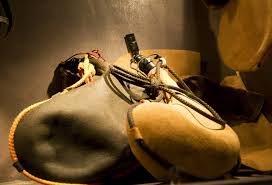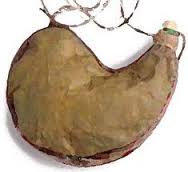 Howard A Snyder’s “The Problem of Wine Skins”
Howard A Snyder’s “The Problem of Wine Skins”
Forty years ago I purchased a copy of The Problem Of Wine Skins: Church Structure In A Theological Age by Howard A Snyder (Inter-Varsity Press, Downers Grove, Ill. 60515, 1975). I have cleaned off my bookshelf several times, but have kept this book on the shelf. I picked it up just the other day, and the truths of it in a Pre-Internet, Pre-Flat World, Pre-Charismatic Movement Day marveled me, for it paralleled much of the current material I am seeking. I would like to share some quotes from the book:
Preface: “Leaving the North American scene and becoming involved in the work of the church in another culture prompted me to a fundamental rethinking of the mission and structure of the church in today’s world. Reading, reflection on my pastoral experience in Detroit, Michigan, my involvements in Brazil and, above all, direct Bible study have together brought me to the conclusions and (in some cases) hypotheses which I venture to set forth in this book. Particularly helpful was an intensive study of the book of Ephesians during 1971.”
 “Jesus’ words in Luke 5:37-38: ‘No one puts new wine into old wineskins, for the new wine bursts the old skins, ruining the skins and spilling the wine. New wine must be put into new wineskins.’ (Living Bible) (p. 13)
“Jesus’ words in Luke 5:37-38: ‘No one puts new wine into old wineskins, for the new wine bursts the old skins, ruining the skins and spilling the wine. New wine must be put into new wineskins.’ (Living Bible) (p. 13)
“God is a God of newness. On the one hand he is ‘the Ancient of Days’, ‘the Father of lights with whom there is no variation or shadow due to change’ (Jas. 1:17), and Jesus Christ is ‘the same yesterday and today and for ever’ (Heb. 13:8). But this does not mean that God is static or stationary. The history of God’s people in the Bible and the history of the Christian church show just the opposite. In every age the true biblical gospel is a message of newness and renewal.” (p. 15)
“Every age knows the temptation to forget that the gospel is ever new. We try to contain the new wine of the gospel in old wineskins – outmoded traditions, obsolete philosophies, creaking institutions, old habits. But with time, the old wineskins begin to bind the gospel. Then they must burst, and the power of the gospel pours forth once more. Many times this has happened in the history of the church. Human nature wants to conserve, but the divine nature is to renew. It seems almost a law that things initially created to aid the gospel eventually become obstacles – old wineskins. Then God has to destroy or abandon them so that the gospel wine can renew man’s world once again. (p. 15-16)
 ….. and finally:
….. and finally:
“There is something else this parable teaches us – the necessity of new wineskins. Wineskins are not eternal. As time passes they must be replaced – not because the gospel changes, but because the gospel itself demands and produces change! New wine must be put into new wineskins – not once-for-all, but repeatedly, periodically.” (p16)
There are a lot of food for thought and a lot of wisdom in those insights!